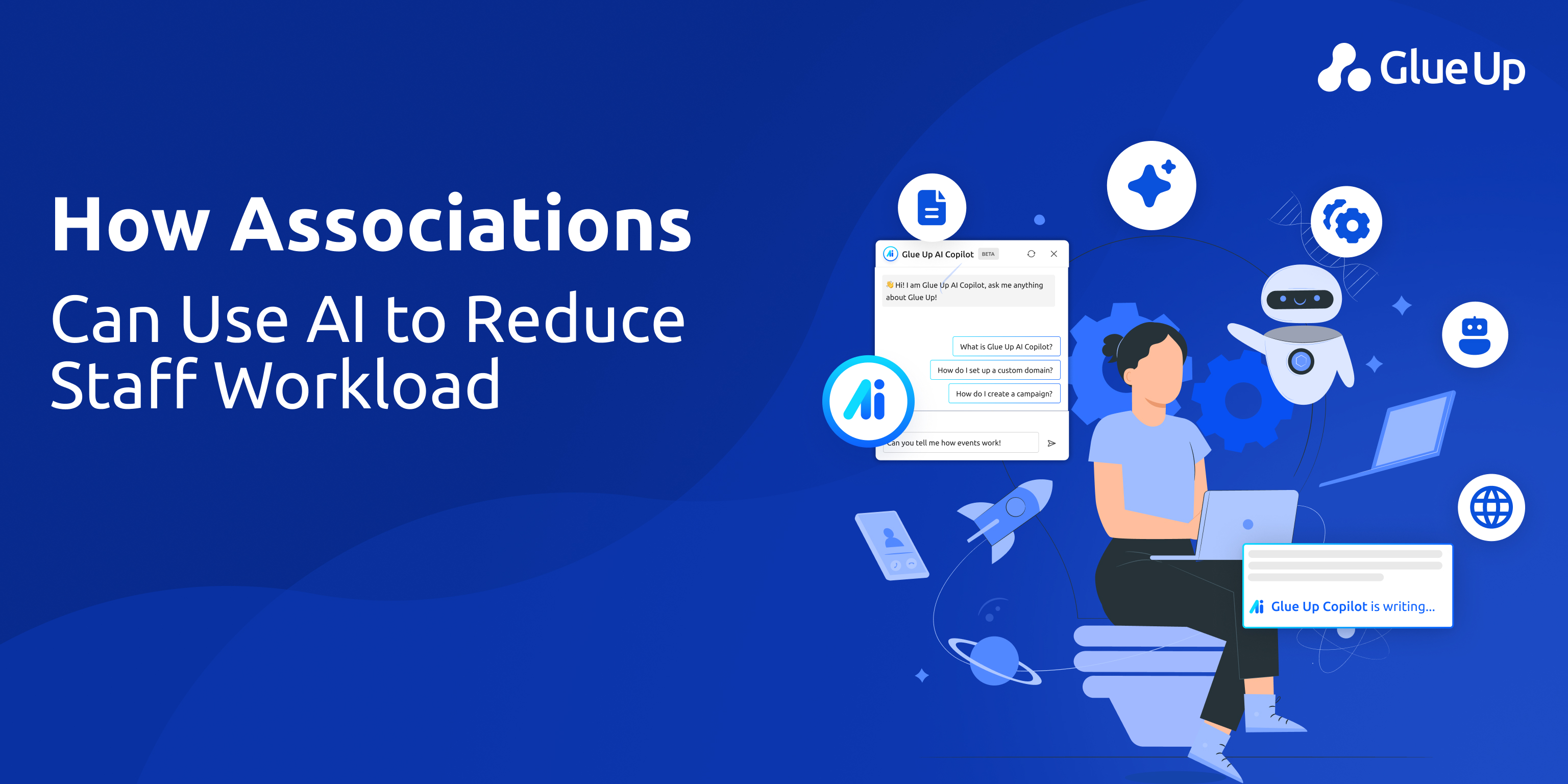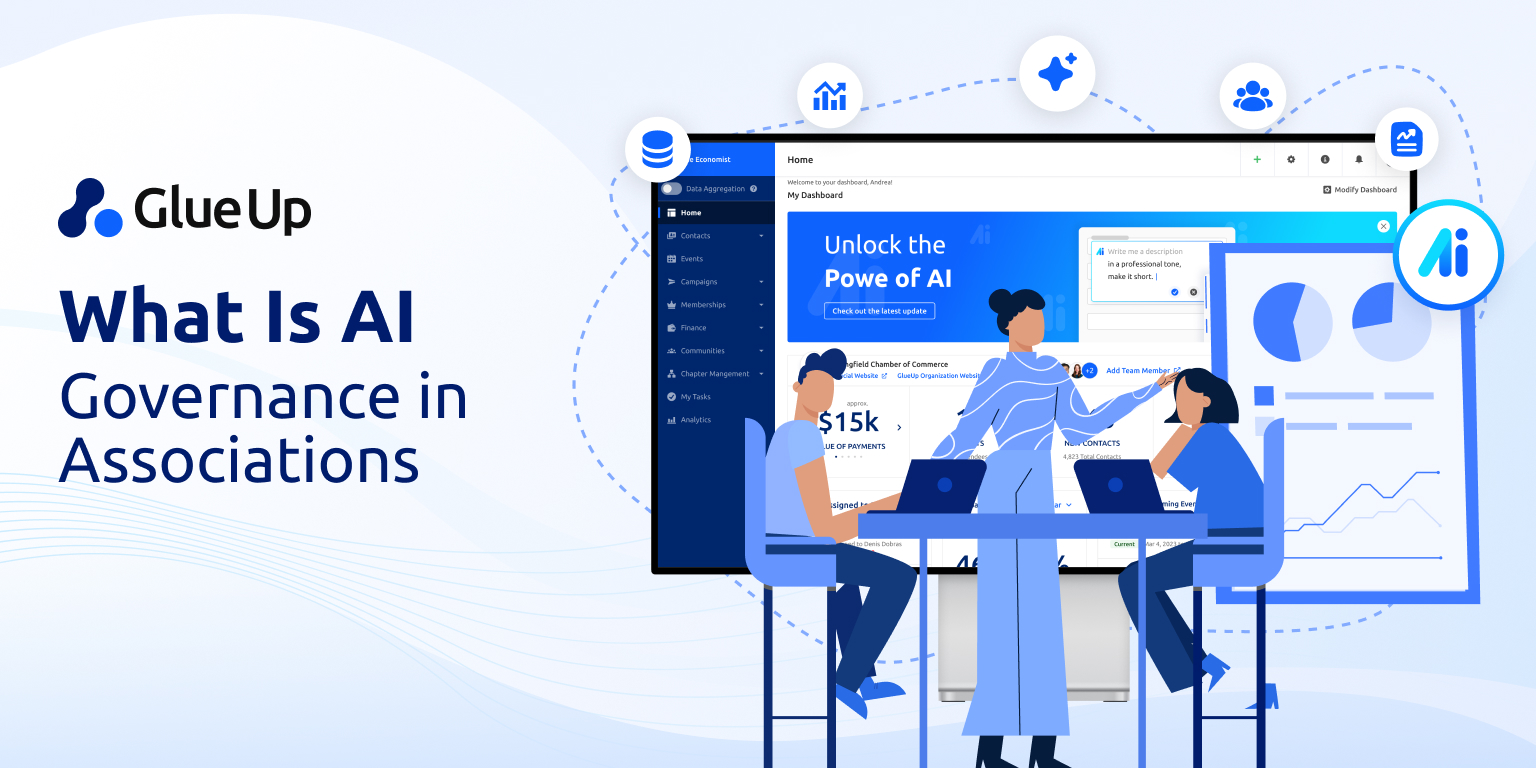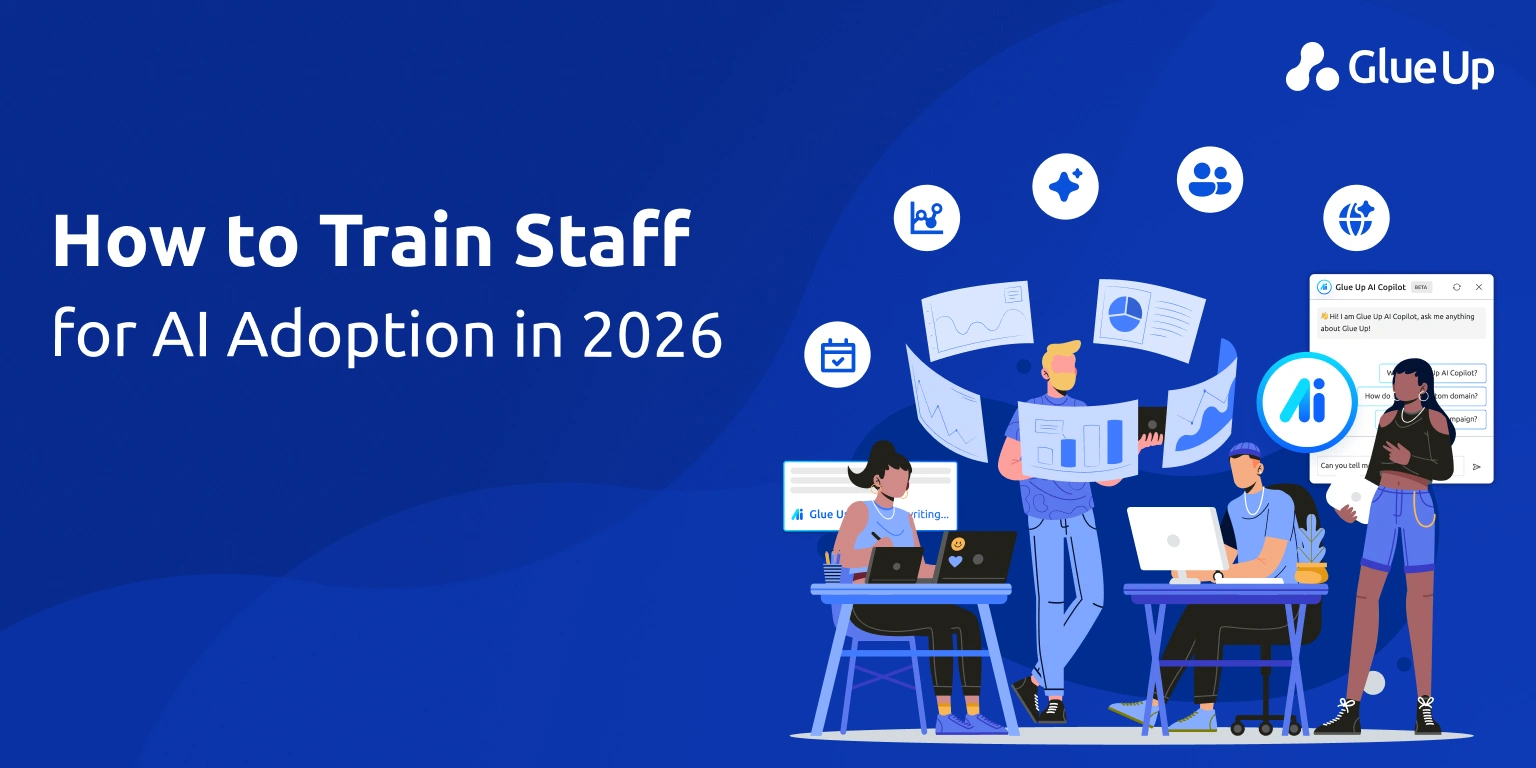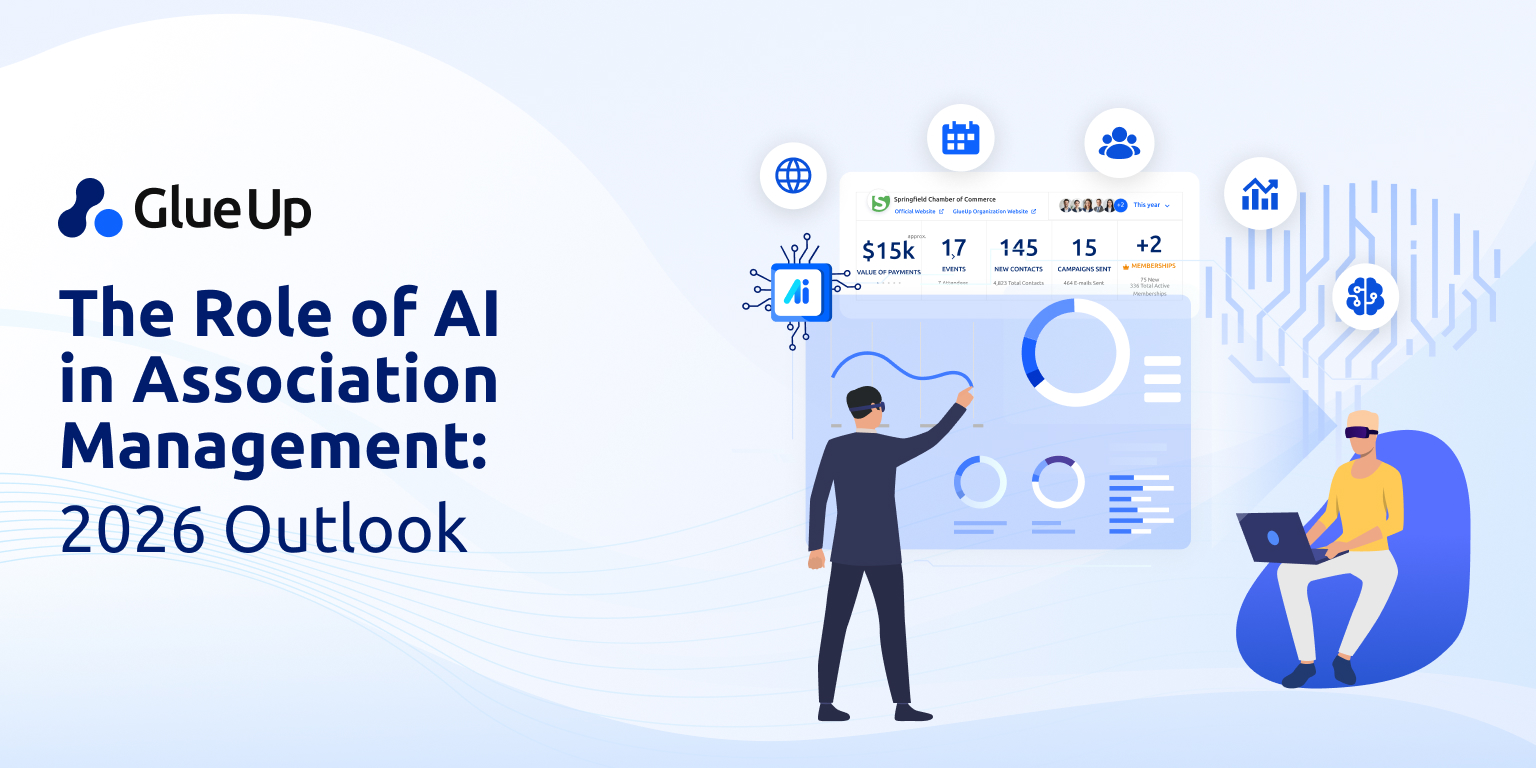
The first thing you notice when you walk into an association office isn’t the mission statement on the wall. It’s the noise, email pings, Slack threads, back-to-back meetings, a printer that hasn’t stopped all morning. Everyone looks busy. Yet half that busyness is administrative gravity pulling talented people away from what matters.
Kaitlyn, a membership manager at a mid-sized professional society, knows that feeling. Her week is an endless carousel of event logistics, invoices, follow-ups, and meeting notes that no one reads. She once joked that her job description could be summarized in two words: “manual everything.”
Now imagine this: Kaitlyn ends a meeting, grabs coffee, and by the time she returns, her AI tool has already transcribed the discussion, tagged every action item, emailed attendees, and updated the association’s CRM.
Her inbox has fewer drafts. Her evenings are hers again.
That’s AI workload management in motion, an emerging discipline that uses artificial intelligence to automate the invisible work that drains associations every day. The grunt work.
It’s how associations are quietly redesigning how work gets done.
Key Takeaways
AI workload management turns busywork into strategy. By automating meeting summaries, emails, data cleanup, and FAQs, associations can recover up to 40% of staff time and redirect it toward engagement and growth.
Start small and automate the obvious. Early wins, like transcription summaries and chatbot FAQs, build trust and momentum for larger AI projects such as predictive renewals and event content automation.
Human trust is the foundation of AI success. Transparent policies, explainable systems, and “human-in-the-loop” governance models prevent bias, protect data, and make AI adoption feel safe rather than threatening.
Measure both time and morale. ROI is reduced burnout, faster decisions, and higher-quality member interactions. Combine metrics with personal stories to convince boards and funders.
Glue Up makes AI workload management real. With features like AI Copilot, Membership Workflow Manager, and Smart Lists, Glue Up helps associations centralize operations, automate tasks, and reclaim the time to do meaningful work.
Quick Reads
The Moment AI Stopped Being Optional
For decades, member-based organizations have built cultures of service: long hours, tight budgets, “whatever it takes.” But burnout is showing. Staff turnover is rising, and volunteer engagement is flattening. These same organizations sit on data goldmines: event registrations, renewal cycles, feedback surveys, yet rarely use them to make work lighter.
AI flipped that equation.
A 2024 Microsoft Work Trend Index report found that 75 % of knowledge workers now use AI, even when their employers haven’t officially adopted it.
The productivity gains are measurable: users of Microsoft’s Copilot completed content tasks 29 % faster and felt “less mentally drained” at the end of the day.
In controlled pilots, newer employees saw the biggest jumps in efficiency, proof that AI can flatten learning curves as well as workloads.
In the nonprofit and association sector, the implications are enormous. The same research culture that once treated automation as cold or impersonal now recognizes something else: it’s humane to remove friction.
When busywork drops, morale rises.
AI workload management is buying back focus.
What “AI Workload Management” Means
Forget the jargon for a moment. At its core, AI workload management means designing your workflows so that machines handle repetitive, low-risk tasks, and humans handle judgment, empathy, and creativity.
Here’s the anatomy:
Capture: Meetings, messages, and forms are automatically logged.
Classify: The system labels each task by type, priority, and owner.
Act: AI drafts responses, schedules reminders, or executes routine actions.
Escalate: Complex or sensitive issues get flagged for human review.
Learn: The system tracks outcomes and gets smarter over time.
It’s a cycle: capture, classify, act, escalate, learn; and it runs quietly in the background of your association’s AMS, CRM, or collaboration tools.
In practice, it looks like this:
Meeting notes appear in your inbox before you leave the room.
Member FAQs are answered instantly by chatbots trained on your help-desk archive.
Renewal reminders write themselves, with tone variations depending on engagement risk.
Event registrations sync directly to accounting and analytics.
Data errors flag themselves before finance week hits.
The result? Your staff stop playing traffic cop. Your members stop feeling like numbers. Everyone wins.
The Invisible Tax of Manual Work
Every association pays what we call a “busywork tax.” It hides in spreadsheets, copy-paste routines, duplicate data entries, and meetings that turn into transcription marathons.
Most leaders underestimate how expensive this tax is. In Glue Up’s internal workflow studies with partner associations, teams reported spending 25 % to 40 % of total work hours on repetitive administrative tasks. That’s two workdays a week.
The human cost is worse. The brightest employees burn out first, the ones who care enough to over-deliver. They end up spending their best energy on process instead of purpose.
AI workload management doesn’t erase that overnight, but it starts chipping away at it. Each time a process is automated, someone breathes again.
The Practical Question: What to Automate First?
AI works best when you pick battles that are high volume, low risk, and measurable.
Here’s where most associations start:
1. Meeting Capture and Summaries
Every committee meeting produces hours of notes. AI can transcribe, summarize, and assign tasks instantly.
Average time saved: 45–60 minutes per meeting.
2. Email and Document Drafting
Board updates, sponsor thank-yous, and post-event recaps follow predictable structures. AI creates first drafts; staff refine tone and detail. Time saved: 3–5 hours per week per staffer.
3. Member FAQs and Chatbot Support
AI handles repetitive questions about dues, logins, and event registration. Escalation rules keep complex queries human. Deflection rate: 60–70 % of inbound tickets.
4. Data Cleanup and Sync
AI integrations reconcile records between registration, payment, and CRM systems. No more duplicate names or missing invoices.
5. Renewal Risk Prediction
AI scans engagement signals: event attendance, email opens, invoice timing; to flag at-risk members for personal outreach.
6. Event Content Generation
From agenda blurbs to post-event reports, AI drafts summaries based on transcripts. Your staff focus on quality instead of formatting.
Start small. Nail one use case. Celebrate it publicly. Then move to the next. Momentum builds faster than you think.
What Changes When AI Enters the Room
When AI workload management lands, everything shifts slightly: roles, trust, even tone.
Staff feel lighter. Instead of fearing replacement, they realize they finally have time to think.
Managers shift from “Do it yourself” to “Coach the machine.”
Boards stop asking for status updates and start asking for metrics.
Culture moves from firefighting to foresight.
A 2025 study in Information & Management found that employees using generative AI reported better emotional well-being, provided they had autonomy and transparency about how AI decisions were made. That’s the secret: control breeds comfort.
Associations can learn from that. Make AI visible, explainable, and optional at first. The confidence will grow organically.
How to Build an AI Chatbot for Your Members
If you want one concrete project to start with, make it this.
Step 1: Define Your Scope
List the top 40 questions your members ask. (Logins, receipts, event registration, CE credits, dues deadlines.)
Step 2: Ground it in Your Content
Train your chatbot on your own policies, help docs, and event FAQs.
Never let it pull random web answers.
Step 3: Set Escalation Triggers
When confidence drops below 80 %, or when questions touch payments or legal policy, route to human support.
Step 4: Disclose and Protect
Label AI responses clearly. Log metadata. Comply with GDPR and local equivalents.
Step 5: Pilot Quietly
Roll out internally, then to a small member group. Measure deflection, tone, and satisfaction.
Step 6: Iterate Weekly
AI isn’t a “set it and forget it” tool. Review logs, patch misunderstandings, update training data.
Done right, you’ll free dozens of hours per month. Done poorly, you’ll damage trust. Transparency is the dividing line.
Governance, Privacy, and the Ethics Conversation
Your board will ask, “How do we keep this safe?”
You need a governance framework. The best place to start is the NIST AI Risk Management Framework (AI RMF 1.0). It boils down to four verbs: Govern, Map, Measure, Manage.
Govern: Assign roles, accountability, and policies.
Map: Understand your AI systems, data flows, and stakeholders.
Measure: Evaluate performance, bias, reliability, and security.
Manage: Monitor, refine, and respond to incidents.
For smaller associations, this doesn’t need to be 60 pages. A one-page “Responsible AI Policy” goes a long way.
It should include:
vendor responsibilities (no model training on member data)
data retention limits
human-in-the-loop assurance
transparency and disclosure standards
periodic audits
Borrow language from ISO/IEC 42001, the new international standard for AI management systems, if you want extra credibility. Your privacy officer will thank you.
How to Measure Success (and Prove It to Your Board)
You don’t get credit for good intentions; you get credit for numbers.
Track these metrics:
Time saved: Hours per employee reclaimed weekly.
Deflection rate: Percentage of member inquiries resolved by AI.
Renewal lift: Increase in saved or re-engaged members after predictive outreach.
Event efficiency: Hours from planning to wrap-up reduced.
Data accuracy: Error rate drop after automated cleanup.
Adoption: Staff usage rates, override percentages, satisfaction surveys.
Simple ROI model: 
Don’t stop at numbers. Add one qualitative line per metric, “What changed for our people.” Boards remember stories.
AI is Personal
Every technology shift starts with skepticism. “We’ve always done it this way.” But something deeper is happening in associations. For the first time, automation is being framed as empathy.
Because burnout is a signal of broken systems. When you remove manual friction, you give people permission to care again.
AI workload management does that quietly: it turns time back into trust. One communications director told us, “I don’t dream about spreadsheets anymore. That’s worth more than ROI.”
That’s the story you want to tell your board.
A Six-Week Roadmap to Pilot AI Workload Management
If you’re serious about trying this, here’s how to start without derailing your entire operation.
| Week | Focus | Outcome |
|---|---|---|
| 1 | Pick two workflows (meeting summaries + email drafts). Set baselines. | Clear success metrics. |
| 2 | Connect tools (Zoom AI, Otter, or Glue Up integrations). | Prototype workflow. |
| 3 | Pilot internally. | Time-savings data, user feedback. |
| 4 | Draft your Responsible AI Policy. | Board and staff alignment. |
| 5 | Expand to member chatbot or renewal prediction. | Broader use case. |
| 6 | Present results. | Proof of ROI, go-ahead for scale. |
Make the pilot public inside your team. Share screenshots, celebrate time saved, name the skeptics who converted. Culture shifts one small win at a time.
The Glue Up: Where It All Connects
Glue Up’s platform was built for this moment. Across membership, events, and finance, it already houses the data most associations need to automate intelligently. Layering AI workload management on top turns that data into action:
Smart Lists that prioritize outreach based on AI-flagged behavior.
Membership Workflow Manager that automates renewals and approvals.
AI Copilot that drafts communications, suggests next steps, and learns your tone.
Event Intelligence that summarizes sessions and measures engagement.
Everything lives in one ecosystem. That’s what makes AI actually stick: centralization, context, and clarity.
Looking Ahead: The Second Wave
The first wave of AI adoption was about speed. The next will be about meaning.
In 2026, associations will compete on how human their automation feels. Personalization, empathy, and data ethics will become the new currency of trust. Members will expect answers that sound like you.
That’s the long game for AI workload management: redefining member experience at scale.
Final Takeaway
If your team feels stretched thin, AI workload management is oxygen.
Start small. Automate the obvious. Measure everything. Talk openly about what changes, and what doesn’t.
And when you’re ready to see what this looks like in a single, unified system, take a look at Glue Up. Its AI-powered association management tools are already helping teams cut through the noise, reduce burnout, and refocus on their mission.
Book a quick demo today, see your own workflows mapped in real time, and start reclaiming hours you didn’t know you’d lost.
Because in the end, time is your most valuable member benefit.



